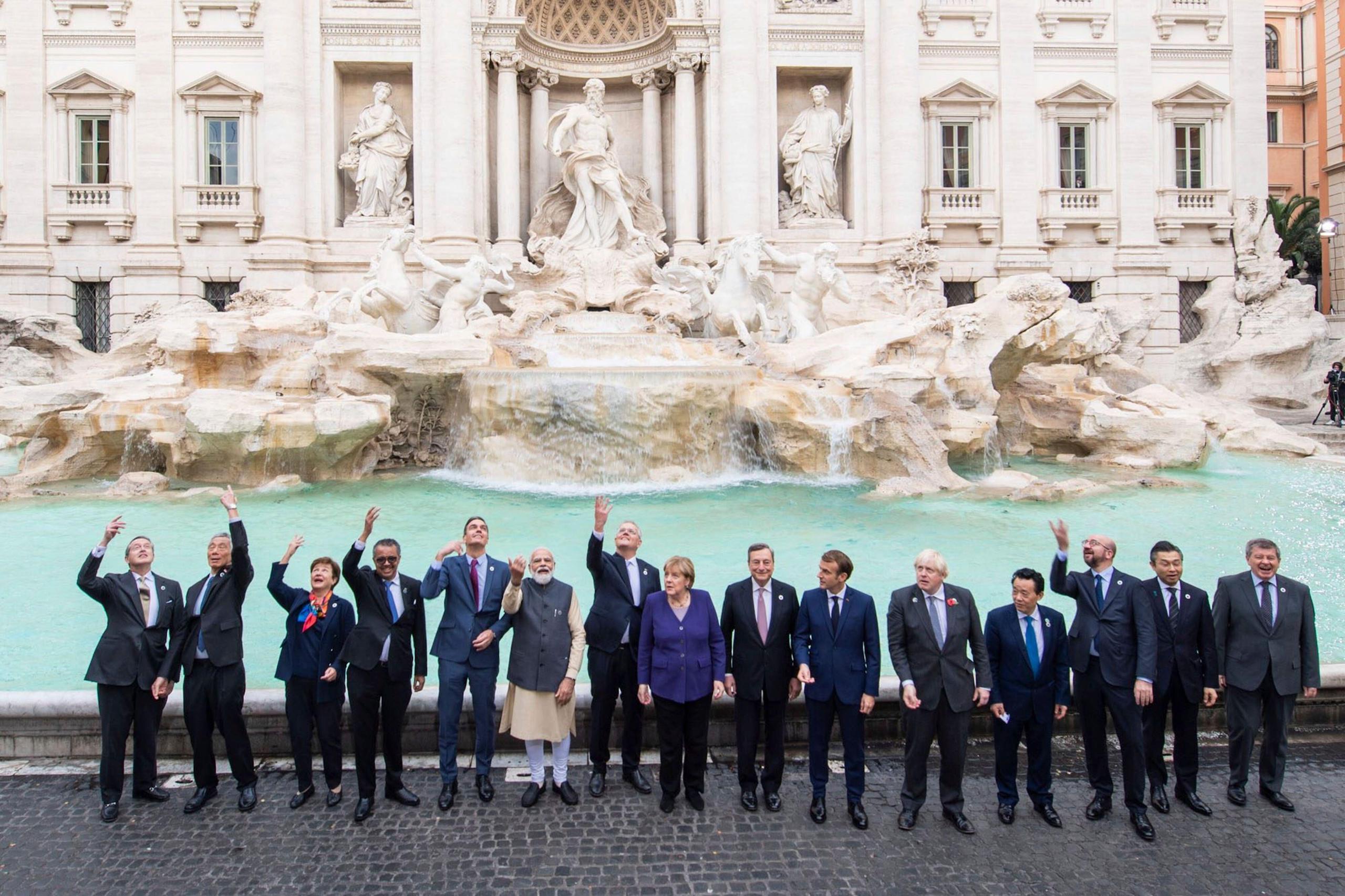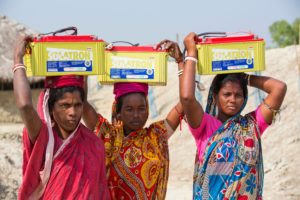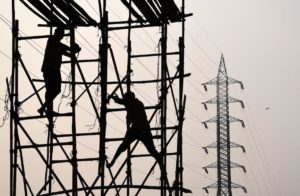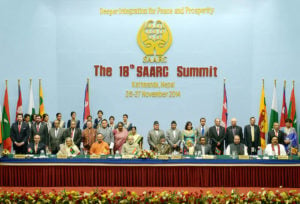Despite dire warnings from scientists and an appeal by the UN Secretary General for G20 countries to take the lead in curbing emissions of greenhouse gases (GHGs), the Indian government has so far kept talk of any specific action to combat climate change out of the G20 agenda.
India took over the presidency of the G20 – the grouping of the world’s 20 biggest economies, which collectively account for 75-80% of global GHG emissions – in December 2022. At the transition of the presidency from Indonesia to India, the Indian prime minister, Narendra Modi, said the challenges of “climate change, terrorism, and pandemics can be solved not by fighting each other, but only by acting together”.
But despite diplomatic pressure on India from developed countries to revise its net-zero target to 2050 to help slow global warming, officials in India remain committed to a 2070 deadline.
Climate at the G20 meetings
India has hosted a series of ministerial meetings during its G20 presidency so far, with environment minister Bhupinder Yadav welcoming delegates from the United States and several EU countries. According to officials of more than one delegation, who spoke on condition of anonymity since the suggestions were “informal”, they suggested that India is in a position to advance its net-zero year to 2050, and that an announcement to this effect by the Indian prime minister at the G20 summit scheduled for September would be “a huge thing”. Indian officials talked of “pressure by developed countries” in this regard.
However, none of this came up in the formal talks. Amitabh Kant, India’s G20 sherpa, dismissed the idea and told The Third Pole he had “not seen, heard or experienced any such pressure”. However, Sanjay Vashisht, head of Climate Action Network South Asia, confirmed that there has been renewed pressure on India to advance its net-zero target year. He told The Third Pole: “India was under pressure to [announce] net-zero before [the 2021] Glasgow COP and when 2070 was announced, it did defuse the international pressure for a while, but expectations were that India should renew its net-zero to [an] earlier year.”
This pressure is part of an effort to end the differentiation between developed and developing countries, according to Vashisht. While India has managed to maintain this distinction in climate talks, using the argument of “common but differentiated responsibilities and respective capabilities” – a pillar of the UN climate convention – he said there has been “renewed pressure to erase this line once again”.
Bureaucrats who spoke with The Third Pole said India was unlikely to make any specific climate commitments at the G20 forum.
RR Rashmi, who headed the Indian government’s delegation to UN climate negotiations for many years and is now with think tank The Energy and Resources Institute (TERI), told The Third Pole: “In my view, the net-zero question is not something that G20 would even attempt to address… There is really nothing on offer within G20 to induce India to revisit its net-zero dateline. It is more likely that the issue will be discussed and decided within UNFCCC [the UN Framework Convention on Climate Change] where the national commitments are to be taken into account both in the short run (2030) and the long run (2050).”
The UNFCCC’s annual summit or COP – the next one, COP28, is scheduled to be held in the United Arab Emirates towards the end of this year – will consider how countries have done in comparison with the climate pledges they made under the 2015 Paris Agreement, and the extent to which they can do better. This process is called the global stocktake (GST), and the Indian government has started preparing the report it plans to submit to the UN.
The current thinking in Indian government circles is that at the September G20 summit, prime minister Modi may emphasise the concept of LIFE (lifestyle for environment) that he has been pushing at international forums, together with the work India has done on renewable energy at home and abroad through the International Solar Alliance and through the Coalition for Disaster Resilient Infrastructure.
Need for climate action now
In India, especially among civil society organisations, the focus is less on the date of the net-zero target than on how a quicker transition to a greener economy can lead to better outcomes in jobs, health and sustained economic security. Experts and NGOs say it is in India’s interest – at the local, provincial and national levels – to move faster.
For Vashisht, the biggest single thing that will make the government accelerate its efforts is results on the ground. “India achieved more than 125 GW of renewable energy out of the 175 GW committed by GoI [government of India] up to 2022. This achievement gave confidence to GoI to announce 500 GW by 2030,” he told The Third Pole. Success of short-term transitions could speed up India’s transition, he explained, especially, “in the context that developed countries have failed to provide finance and technology transfer, which adds to the uncertainty of achieving long-term commitments”.
A green transition also provides political benefits, as it “brings new opportunities of job creation, clean environment and business options,” he added. “The leadership… can take deserved credit for facilitating the change for the good of Indian society.”
Policy certainty is key to boost investor confidence as India needs around USD 400-500 billion of capital to meet its 2030 clean energy targetVibhuti Garg, South Asia Director at IEEFA
But India has to accelerate the pace if it is to fully take advantage of the benefits of energy transition, according to Vibhuti Garg, South Asia director at think tank the Institute for Energy Economics and Financial Analysis (IEEFA). At the launch of a recent report by think tank Ember, she said: “India has made remarkable progress in its electricity transition journey with the share of renewable energy increasing in total installed capacity. However, the share of renewable energy in total generation also needs to increase at an accelerated pace… policy certainty is key to boost investor confidence as India needs around USD 400-500 billion of capital to meet its 2030 clean energy target.”
Unfortunately, an inward looking lens will do little to help India’s presidency of the G20 bridge the divide between the global south and the global north, according to experts like Avinash Persaud, emeritus professor at Gresham College in the United Kingdom and special envoy to the prime minister of Barbados on investment and financial services. At a closed-door webinar attended by The Third Pole in late March, Persaud said: “I think India has got some work to do to be a champion of the global south… 40% of the world or 3.3 billion people are burning up and drowning [and] are the most climate vulnerable people. I think India needs a different language around that [if it wants to be seen as their champion].”
“Rich countries are rich because they have put the stock of greenhouse gases up in the atmosphere,” said Persaud, adding that they should pay for the consequences. “[But] will they pay? No. So what do we do?… We need to have alternative ways in which we manage to transition our economy, make our countries more resilient, and get some external funding for loss and damage.”
A question of money
India itself needs far more money for the energy transition. The International Forum for Environment, Sustainability and Technology (iFOREST), a think tank, has estimated in a recent report that at least USD 900 billion will be required for a just energy transition in India over the next 30 years, with this figure accounting only for coal mines and thermal power plants.
At the launch of the report, Chandra Bhushan, president and CEO of iFOREST said: “While our strategy for just transition should be guided by the country’s net zero target and energy independence goals, our actions should be to build green energy and industries and develop a skilled workforce.”
To do this, India has to negotiate for more climate finance flows from developed to developing countries, with far more attractive rates of interest, if not as grants. For many experts in India and the global south, this should be its most important climate leadership goal.









